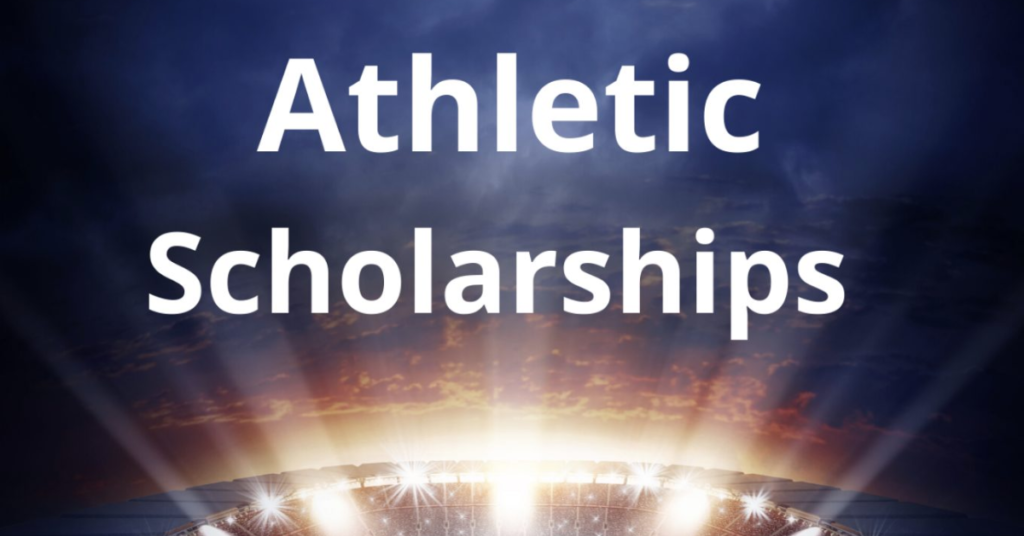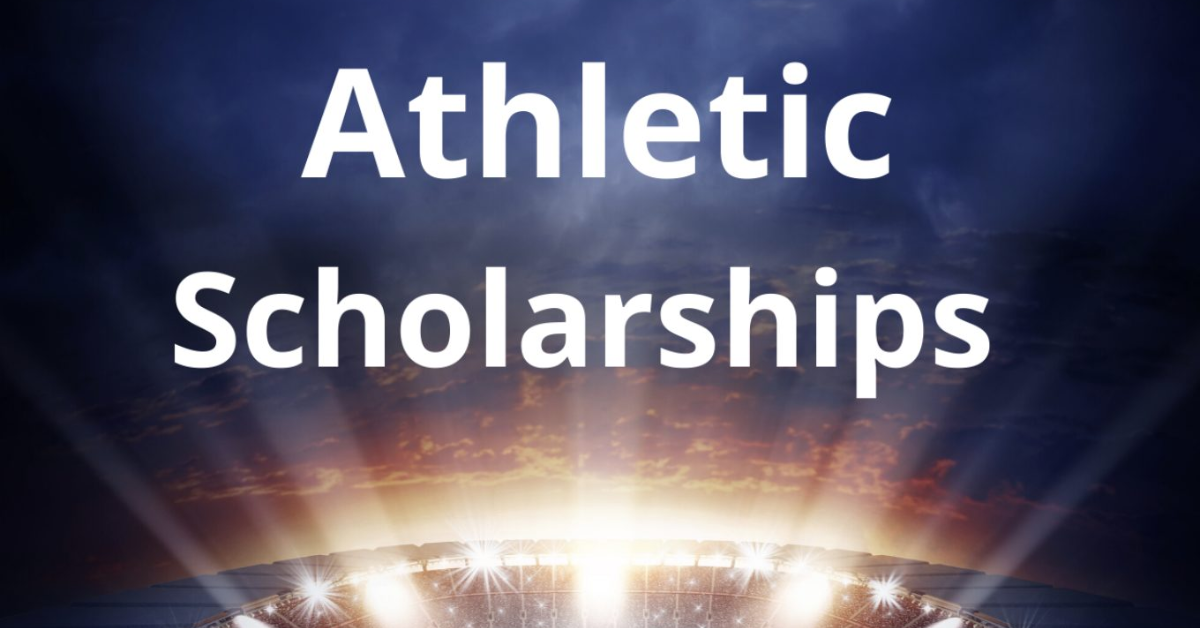Athletic scholarships present a vital opportunity for student-athletes to pursue higher education while excelling in their sports. For many talented individuals, these scholarships provide essential financial assistance that helps alleviate the cost of tuition and related expenses. This comprehensive guide will explore the various types of athletic scholarships, the eligibility criteria, the application process, and the potential benefits and challenges associated with balancing academics and athletics.

Understanding Athletic Scholarships
Athletic scholarships are financial awards given to student-athletes based on their athletic abilities and performance. They can significantly reduce the financial burden of attending college, allowing student-athletes to focus on both their academic and athletic pursuits.
Types of Athletic Scholarships
Athletic scholarships come in different forms, each varying in terms of coverage and financial aid.
Full-Ride Scholarships
Full-ride scholarships are the most sought-after type of athletic aid. These scholarships cover all major expenses associated with attending college, including tuition, room and board, books, and other fees. Typically awarded to standout athletes in high-demand sports, such as football and basketball, full-ride scholarships can be worth tens of thousands of dollars each year. However, competition for these scholarships is fierce, as only the most exceptional athletes are offered this level of support.
Partial Scholarships
Partial scholarships provide financial assistance for specific costs, such as tuition or housing, but do not cover all expenses. These scholarships are more common across a broader range of sports and at colleges with limited athletic budgets. Athletes who receive partial scholarships often combine them with academic scholarships, grants, or student loans to cover their total college expenses.
Walk-On Opportunities
Some student-athletes may not receive an initial athletic scholarship but can still join a college team as walk-ons. Walk-ons do not receive financial aid at the start but can earn a scholarship after proving their worth through hard work and performance. This pathway allows athletes to demonstrate their skills and potentially secure funding later in their collegiate careers.
Division Levels and Their Impact on Scholarships
Athletic scholarships are awarded based on the division level of the college or university. Each division offers different scholarship opportunities governed by their respective athletic organizations.
- NCAA Division I: This division has the most extensive athletic programs and budgets, making it the primary source of full-ride scholarships. Division I institutions typically provide scholarships for high-profile sports such as football and basketball, along with numerous other sports.
- NCAA Division II: Schools in this division offer a mix of full and partial scholarships, though full-ride offers are less common than in Division I. Division II emphasizes a balance between athletics and academics, providing valuable opportunities for athletes across various sports.
- NAIA Schools: The National Association of Intercollegiate Athletics (NAIA) governs smaller colleges that also offer athletic scholarships. While NAIA scholarships are typically smaller in amount compared to NCAA offers, they still provide essential financial support for student-athletes.
- NJCAA Schools: The National Junior College Athletic Association (NJCAA) oversees junior colleges that offer scholarships to athletes. These scholarships often serve as a pathway for students to transfer to four-year institutions after enhancing their academic performance or athletic skills.
Eligibility Requirements for Athletic Scholarships
To secure an athletic scholarship, student-athletes must meet specific eligibility criteria encompassing academic performance, athletic talent, and personal characteristics.
Athletic Performance
The primary factor in awarding athletic scholarships is the athlete’s performance in their chosen sport. Coaches evaluate athletes based on their achievements, statistics, and overall skill level. Standout performances in high school, club competitions, or regional tournaments can help athletes capture the attention of college recruiters. Highlight reels and performance records are valuable tools for showcasing an athlete’s potential to compete at the collegiate level.
Academic Standards
In addition to athletic talent, student-athletes must also meet academic eligibility requirements established by the NCAA, NAIA, and other governing bodies. A minimum GPA, often around 2.3, and acceptable SAT or ACT scores are standard prerequisites. Athletes must demonstrate their commitment to academic success, as failing to maintain eligibility could jeopardize their scholarships.
Character and Leadership Qualities
Coaches look for more than just athletic ability; they seek student-athletes who exemplify leadership, teamwork, and dedication. Athletes who participate in community service, take on leadership roles within their teams, or demonstrate good sportsmanship are often more attractive to college programs. Strong character traits can enhance an athlete’s candidacy for a scholarship.
The Athletic Scholarship Application Process
The process of applying for athletic scholarships involves several key steps that require planning, preparation, and effort.
Recruitment and Scouting
Recruitment typically begins during an athlete’s high school years, often in their sophomore or junior year. Coaches and recruiters identify talented athletes through competitions, camps, and showcases. To enhance visibility, athletes should actively participate in tournaments and keep their recruitment profiles updated on relevant platforms. Sending highlight videos and performance statistics to college coaches can increase the chances of receiving scholarship offers.
Receiving Offers and Making Commitments
Once a coach expresses interest in an athlete, scholarship offers may follow. Athletes should carefully consider each offer, comparing financial aid packages, athletic program culture, and academic opportunities. It’s essential to understand the terms of the scholarship, as some may have performance-based conditions that could affect the athlete’s eligibility in the future. Once an athlete accepts a scholarship offer, a verbal commitment may precede the formal signing of the National Letter of Intent (NLI).
Signing the National Letter of Intent (NLI)
The NLI is a binding agreement that confirms an athlete’s commitment to a college or university and secures their scholarship funding. Signing the NLI typically occurs during designated signing periods, marking a significant milestone in the athletic scholarship journey.
Balancing Athletics and Academics
While athletic scholarships provide significant benefits, they also come with challenges, particularly regarding time management and academic performance.
Time Management Skills
Student-athletes often juggle rigorous training schedules, practices, and competitions, which can amount to 20-30 hours per week. Balancing these commitments with a full course load requires exceptional time management skills. Many colleges offer academic resources, such as tutoring and study halls, to assist student-athletes in maintaining their academic performance.
Maintaining Academic Standards
To retain their scholarships, student-athletes must meet academic requirements set by both their athletic programs and the college. Failing to maintain a minimum GPA can result in losing financial aid. Academic support services tailored to athletes can help them navigate the demands of college coursework while fulfilling their athletic responsibilities.
Pros and Cons of Athletic Scholarships
Athletic scholarships provide numerous advantages but also present unique challenges that student-athletes should carefully consider.
Advantages
- Financial Assistance: The most obvious benefit of athletic scholarships is the financial relief they provide. Full-ride scholarships can eliminate the burden of college expenses, while partial scholarships still contribute significantly to lowering costs.
- Skill Development: Participating in college sports helps student-athletes develop essential life skills such as discipline, teamwork, leadership, and time management. These skills are beneficial both in their sport and in future professional endeavors.
- Networking Opportunities: Athletic scholarships provide student-athletes with access to extensive networks of coaches, alumni, and peers. Building these connections can lead to career opportunities and personal growth beyond college.
Challenges
- High Expectations and Pressure: Student-athletes often face immense pressure to perform both academically and athletically. The demands of competing at a high level can create stress, especially when coupled with the need to maintain academic performance.
- Risk of Injury: The physical nature of college sports comes with the risk of injury, which can impact an athlete’s ability to compete and jeopardize their scholarship. Colleges typically have injury protocols in place, but the potential for injury remains a concern.
Conclusion
Athletic scholarships provide talented student-athletes with a unique opportunity to pursue higher education while excelling in their sports. With dedication and hard work, athletes can navigate the competitive landscape of recruitment and scholarship offers to secure financial aid that enables them to achieve their academic and athletic goals. Balancing the demands of college sports and academic performance is challenging, but the rewards—both financial and personal—can be life-changing. Ultimately, athletic scholarships not only foster success in the classroom and on the field but also prepare student-athletes for future opportunities in their careers and beyond.
